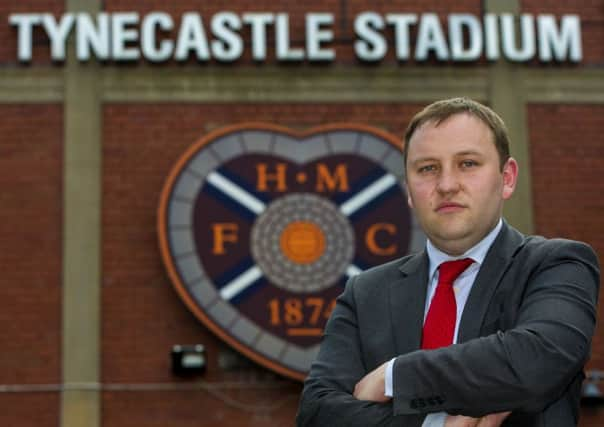Leaders: Ian Murray wears Hearts on his sleeve


It is a role that will ensure Mr Murray gets barely a moment’s peace for the duration of this parliament, as he finds himself propelled into a situation that he could hardly have anticipated. Where once the Scottish Labour contingent at Westminster would have had a series of spokespeople to whom the media would turn for comment, now Mr Murray has to be an instant expert on every subject under the sun. It is a task some might have recoiled from, but the member for Edinburgh South has embraced the challenge, emerging into the spotlight and putting his capabilities on full show.
Previously, Mr Murray’s most high-profile role was arguably his involvement with the campaign to save Heart of Midlothian Football Club. As chairman of the Foundation of Hearts, he helped the club to recover from the financial ruin of the Vladimir Romanov era, surviving administration and finding a new owner. There had been times when many had believed there was no hope for the Hearts, but now the club continues to rebuild and, after a brief demotion, takes its place back in the top league this season.
Advertisement
Hide AdAdvertisement
Hide AdPerhaps inevitably, Mr Murray has drawn a parallel between his team and his political party. Both are organisations which lost their way, and just like Hearts, he says that Labour can be put back on track with a “community-based solutions” and a “new fresh leadership team”. It’s not difficult to see where Mr Murray is coming from, and there are certainly similarities over the fate of these two institutions.
However, there is a big difference. Hearts supporters did not lose faith in their team, and drift away to support their rivals. This would be unthinkable in football, where loyalty is strong and disaffected supporters merely stay away, often to return later, rather than transfer their allegiance.
Hearts did look doomed at times, but the Labour party in Scotland could face an even bigger battle to restore its fortunes. Although Mr Murray is talking a good game, he could be about to find that sparing a stricken football club from oblivion was straightforward in comparison to the challenge faced now.
He has made a bold declaration by calling on the party to move on from the big beasts of Smith, Dewar and Brown, and look to a new generation. But like a football club bidding to attract new supporters, Labour has to find a way of giving people a reason to believe again.
Just not good enough in 2015
It is disheartening to report that the pay gap between men and women is widening in Scotland at the same time as it closes elsewhere in the UK.
Despite having a female First Minister for the first time, it appears that it will take more than a principal role model to encourage equal pay, according to figures produced by Fiscal Affairs Scotland.
And starkly, the Law Society of Scotland today also reveals that male solicitors earn as much as 42 per cent more than their female counterparts.
It is not clear why Scotland defied the UK trend over equal pay. The Scottish Government remains committed to tackling low pay and the gender pay gap, but the reasons for the widening of the gap must be examined and then addressed if the political will to achieve parity is to have any effect.
Advertisement
Hide AdAdvertisement
Hide AdHowever, the issue is not the sole responsibility of the government. Measures can be taken to address public sector differentials, but the private sector also has a responsibility to implement fairer salary levels.
The Law Society of Scotland’s research shows that there are pay gaps between men and women at all stages of their legal career. There are, as ever, reasons why women fall behind, such as career breaks when families are started, but it is unacceptable and without justification that disparities exist at every level.
The society is to be credited for shining a light on its profession’s own affairs and exposing this uncomfortable truth, and it is to be hoped these findings cause enough embarrassment to spark the change in attitude that is required to close the gap. In 2015, it’s not good enough.